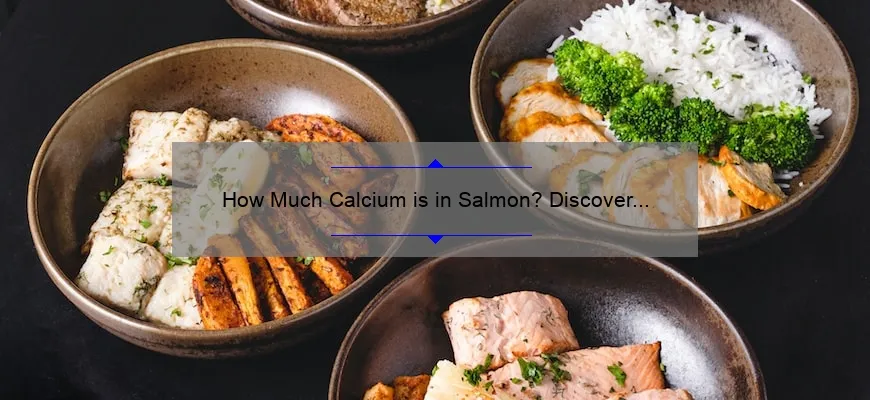Short answer how much calcium is in salmon: 100 grams of raw wild Atlantic salmon contains approximately 12 milligrams (mg) of calcium, while the same amount of cooked sockeye or pink Pacific salmon may contain up to 25 mg.
What is the calcium content in a standard serving of salmon?
Salmon is a popular type of fish that many people enjoy for its delicious taste and numerous health benefits. One important nutrient found in salmon is calcium, which plays an essential role in bone health.
Here are some key points about the calcium content in a standard serving of salmon:
1. Calcium levels vary depending on the type and preparation method of your salmon dish.
2. A three-ounce serving of raw Atlantic or sockeye salmon contains around 25 mg to 40 mg of calcium.
3. Canned pink or red varieties have much less, with only approximately four milligrams per three ounces due to being processed differently during canning.
While not as high as sources such as yogurt, cheese, milk products/spinach/collard greens (about ten times lower), eating frequent servings adds up over time you get more from understanding complementary foods within meals like other dairy-rich options served alongside it rich Vitamin D food items including fortified cereals/orange juice etc…
Overall though know there’s indeed enough evidence supporting consuming seafood may support against osteoporosis given concerns regarding loss density related factors dietary changes & unhealthy lifestyle habits nowadays calling attention towards nutrients beneficial — incuding necessary minerals like bones!
Is there more or less calcium in wild-caught versus farmed salmon?
When it comes to the calcium content of salmon, there is debate about whether wild-caught or farmed has more. Here are some quick facts:
1. Wild-caught salmon tend to have higher levels of omega-3 fatty acids than farmed.
2. Farmed salmon typically contain less mercury and PCBs (toxic chemicals) due to being fed a controlled diet.
3. Both types can be good sources of protein, vitamins B12 and D, as well as minerals such as phosphorus and selenium.
The amount of calcium in each type varies depending on factors like where they were caught/farmed, age/size at harvest time etc., so it’s difficult to say for certain which one contains more calcium overall.
One study compared four species*^1of commercially available fresh/frozen fish sold in US supermarkets: Atlantic Salmon – Farm Raised ; Coho Salmon-Wild Pacific Quinault; PinkSalmonWild-PACIFIC Sockeye; Salmo n-Wi l dAt I antic
This study found that all types had similar amounts per serving size (~28g), ranging from 17-35mg/serving.^2 This suggests that while there may be minor differences between individual specimens based on various environmental conditions or dietary intake habits over time , their nutritional values regarding this particular trait seem relatively comparable across different choices when considering only those offered together by common retailers .
In conclusion: The variance demonstrated with regard-to comparing these two categories doesn’t appear significant enough alone without including other important criteria suchas lifestyle choicesto be conclusive one wayor another if you’re solely seeking high-calcium seafood options .








